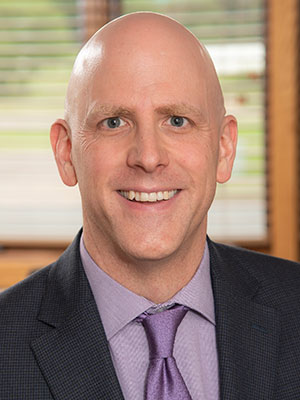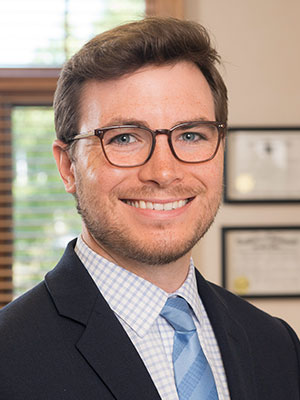
Aug. 16, 2023 – It’s been a year-and-a-half since schools across Wisconsin reopened after pandemic closures.
Legal fights over mask policies and reopening plans have given way to squabbles over constitutional issues driven largely by political polarization, say two attorneys who practice school law with Weld Riley, S.C.
First Amendment protections for student speech top the list of issues that Sven Strutz, who works in Weld Riley’s Eau Claire office, has worked on the last two years.
Digital technology, plus the rapid advent of social media, makes it easier for students to widely communicate speech than ever before.
A prime issue, said Strutz, is whether student speech is determined to have occurred on campus or off campus.
School districts have a greater interest in regulating on-campus speech, Strutz said, because on-campus speech has a greater potential to “materially and substantially disrupt the work and discipline of the school,” the standard established by the U.S. Supreme Court in Tinker v. Des Moines Independent Community School District, 393 U.S. 503 (1969).
In 2021, in Mahanoy Area School District v. B.L., 141 S. Ct. 2038 (2021), the U.S. Supreme Court applied the Tinker standard to hold (8-1) that a cheerleader’s profanity-laced social media posts, made outside school hours and while the student was outside school property, were protected under the First Amendment.
The cheerleader made the posts after her coach decided not to promote her to the varsity squad.
In an opinion written by Justice Stephen Breyer, the court acknowledged that while public schools may have an interest in regulating some off-campus student speech, the cheerleader’s posts did not meet the Tinker standard for being materially and substantially disruptive.
Fake Instagram Account

“So much of this is driven by social media. There’s a herd mentality, where suddenly we’re hearing a whole lot of stuff on library books. Then later, we’re doing a whole lot of stuff on transgender issues.” – Sven Strutz, Weld Riley, S.C.
But some off-campus speech does meet the Tinker standard.
Earlier this year, in Kuchinski v. Freeland Community School District, No. 22-1748 (June 2, 2023), the U.S. Court of Appeals for the Sixth Circuit held that off-campus student posts made to a fake Instagram account met the Tinker standard, and ruled that the school district had the authority to discipline the students who made the posts.
In Kuchinski, a student created an Instagram account in the name of one of his teachers. Two other students then made posts to the account, in which they disparaged the teachers, a football coach, and a disabled student.
The Sixth Circuit held that, under Mahanoy, the First Amendment allowed the school district to discipline the students who made the off-campus posts because the posts met the Tinker standard and caused a substantial disruption at the school.
“A student saw one of the targeted teachers crying in one of her classes,” Judge Andre Mathis wrote. “Students whispered about the posts during the day with each other. Multiple teachers reported disruptions in their classes.”
‘Pretty Targeted’
“My sense is that in Kuchinski, it was pretty targeted at a particular teacher, so I do think it’s in keeping with the parameters set forth by the Supreme Court,” Strutz said.
Strutz said applying the reasoning employed in Mahanoy is always going to be heavily fact dependent.
“The touchstone in these student speech cases is the degree to which you can reasonably forecast disruption,” Strutz said.
“I get a lot of calls from school districts asking about the Confederate flag on students’ vehicles or T-shirts,” Strutz said “I can’t give them an answer that it 100% will be upheld under the First Amendment, because the standard is ‘How reasonable is your forecast of disruption?’”
“The more your school district looks like a racial powder keg, the freer hand you have to regulate something like the Confederate flag,” Strutz said. “Now, most of the cases I have read have held that you can regulate wearing the Confederate flag in school.”
“I’ve seen a couple of exceptions,” Strutz said. “I remember one case from another circuit where a Confederate flag was an element in a Hank Williams, Jr. T-shirt, and that was found to not support a reasonable forecast of disruption.”
What About Teacher Speech?

“Districts, especially up north, are having a very hard time retaining their people. Districts are even poaching from one another. Many districts have in place liquidated damages provisions, and we’re getting calls to help enforce them.” – Davis Runde, Weld Riley, S.C.
Davis Runde, who works in Weld Riley’s Wausau office, said that speech by school district employees is more easily regulated than speech by students.
“Essentially, their speech is hired speech,” Runde said. “Their speech is generally in furtherance of the district’s education mission. Therefore, a district has a much stronger interest in controlling what that speech is.”
Runde cited Mayer v. Monroe County Community School District, 474 F.3d 477 (7th Cir. 2007) as an example.
In Mayer, the Seventh Circuit upheld a district court’s dismissal of a lawsuit by a teacher who’d been fired for discussing her views on the United States’ war in Iraq.
Chief Judge Frank Easterbrook explained that under Seventh Circuit precedent, teachers do not have a constitutional right to express their own views. Rather, he explained, they must stick to both the subject matter and the perspective contained in the approved curriculum.
“This is so because the school system does not ‘regulate’ teachers’ speech as much as it hires that speech,” Easterbrook wrote. “Expression is a teacher’s stock in trade, the commodity she sells to her employer in exchange for a salary.”
“A teacher hired to lead social studies class can’t use it as a platform for a revisionist perspective that Benedict Arnold wasn’t really a traitor, when the approved program calls him one,” Easterbrook wrote.
One basis for the Seventh Circuit’s holding in Mayer is the notion that students are a captive audience, and thus less able to remove themselves from expression by a teacher or administrator that they find objectionable.
Runde cited a LGBTQ pride flag displayed by a teacher in her classroom as an example.
“Where you have a classroom full of students and you talk about your own personal beliefs, that is probably not protected by the First Amendment, because you have these students there primarily because you’re furthering the district’s educational message and the district has the right to make sure your speech is not attributed to the district,” Runde said.
As with student speech issues, the relevant constitutional analysis is often highly fact dependent.
For instance, Runde said, an LGBTQ pride flag mounted on the back of a teacher’s desk where only he or she can see it might warrant more First Amendment protection than if the flag were mounted above the blackboard where students can see it.
“There, it’s a much stronger argument that if someone walked by and saw the flag, they could attribute that speech to the school, and the school might be able to require you to remove the flag.”
Runde said school districts and their lawyers are getting more practice drawing such lines as political discourse descends into increasingly partisan rancor.
“As districts become more politically charged, teachers and employees might push the envelope,” Runde said. “We’ve seen discipline occur because of that.”
Fahrenheit 451?
Once the pandemic died down, Strutz spent much of the 2021-2022 school year fielding questions from school district clients who were facing calls to remove certain titles from their library shelves.
 Jeff M. Brown, Willamette Univ. School of Law 1997, is a legal writer for the State Bar of Wisconsin, Madison. He can be reached by email or by phone at (608) 250-6126.
Jeff M. Brown, Willamette Univ. School of Law 1997, is a legal writer for the State Bar of Wisconsin, Madison. He can be reached by email or by phone at (608) 250-6126.
Once again, social media helped drive the issue. Strutz said many of his clients began receiving requests to remove titles after lists of objectionable titles made their way around social media.
“A lot of the lists were targeting books that might have LGBTQ or racial themes,” Strutz said. “You had a lot of parents going through the process of challenging books. The problem is, if book challenges are successful, there are groups watching how school districts come down on these issues.”
“I have one group of school district clients where I worry that what they do will put them in the crosshairs of the ACLU, and another group that I worry that what they do might put them in the crosshairs of Wisconsin Institute for Law and Liberty,” Strutz said.
Wisconsin Institute for Law and Liberty is a conservative public interest law firm.
Strutz’s task in advising his clients on calls to remove books is complicated by a dearth of solid legal guidance.
For instance, the main U.S. Supreme Court case is a four-decades-old plurality decision, Island Trees School District v. Pico, 457 US 853 (1982).
In that case, a board of education in Long Island, New York removed 11 books from the middle- and high-school libraries. Among the books removed were Slaughterhouse Five by Kurt Vonnegut, Jr., and the Best Short Stories of Negro Writers, edited by Langston Hughes.
Strutz said Pico’s precedential weight is lessened by the fragmented nature of the opinion: four justices concluded that the schools’ removal of the books violated the First Amendment; four concluded the opposite; and one concluded that it was unnecessary for the court to decide the merits of the case.
“Subsequent cases have treated Pico as persuasive authority only,” Strutz said.
Justice William Brennan wrote the plurality opinion, holding that the removal of the books violated the First Amendment. Justice Thurgood Marshall and Justice John Paul Stevens joined the opinion in full and Justice Harry Blackmun joined the opinion in part.
Brennan concluded that middle- and high-school students have a First Amendment right to access information and ideas contained in library books.
“In brief, we hold that local school boards may not remove books from school library shelves simply because they dislike the ideas contained in those books and seek by their removal to ‘prescribe what shall be orthodox in politics, nationalism, religion, or other matters of opinion,’” Justice Brennan wrote.
Chief Justice Warren Burger dissented. He was joined by Justice William Renhquist, Justice Lewis Powell, and Justice Sandra Day O’Connor.
“How are ‘fundamental values’ to be inculcated except by having school boards make content-based decisions about the appropriateness of retaining materials in the school library and curriculum?” Burger wrote. “In order to fulfill its function, an elected school board must express its views on the subjects which are taught to it students.”
Justice Byron White was the fifth vote, along with Brennan and the three justices who joined his opinion, for sending the case back to the U.S. Court of Appeals for the Second Circuit for additional proceedings.
Transgender Issues
Strutz said he spent much of the 2022-23 school year handling issues related to transgender students.
“So much of this is driven by social media,” Strutz said. “There’s a herd mentality, where suddenly we’re hearing a whole lot of stuff on library books. Then later, we’re doing a whole lot of stuff on transgender issues.”
The most common issue facing school districts and their transgender students is bathroom access. School districts are struggling with to how handle that issue, Strutz said.
He cited Whitaker v. Kenosha United School District No. 1 Board of Education, 858 F.3d 1037 (7th Cir. 2017) as an example.
In that case, the Kenosha school district set aside a bathroom for use by a transgender boy, rather than allow him to use the boys’ bathroom.
The transgender student sued the school district under Title IX of the Education Amendments Act of 1972 and the Fourteenth Amendment’s Equal Protection Clause. The U.S. District Court of the Eastern District of Wisconsin issued a preliminary injunction barring the school district from preventing the student from using the boys’ bathroom.
The Seventh Circuit upheld the issuance of a preliminary injunction.
“A policy that requires an individual to use a bathroom that does not conform with his or her gender identity punishes that individual for his or her gender non-conformance, which in turn violates Title IX,” wrote Judge Ann Claire Williams.
Strutz said the Whitaker case has an application beyond bathrooms.
“If you look at the pronouncements of the ruling judges, pretty much all of the language can be imported to the locker room context,” Strutz said.
“At one point, the school district tried to defend its decision to use the bathroom of the gender assigned at birth, based on anatomical differences between male and female,” Strutz said. “The court of appeals said, ‘No, that’s obviously not your real reason, because there are differences between pre- and post-pubescent students and they’re all using the same facilities.’ When you read that Kenosha case, you come away with the opinion that the writing is on the wall for locker rooms and showers as well.”
‘Administrative Nightmare’
School districts are also grappling with less charged issues, such as how to implement a new public records retention schedule approved by the state Public Records Board.
Under the old schedule, all school district records were subject to the same retention period. Under the new schedule, there are 11 categories of records, each with a different retention period.
For instance, Runde said, there’s now a separate category for historical materials and artifacts that document significant events like awards lists, commencement programs, and honors lists.
The new records retention schedule is forcing school districts to review all their records and assign each to one of the new retention categories.
“It’s a convoluted process,” Runde said. “It’s going to require districts to be intentional about reviewing their records and how they’re retaining them instead of being able to adopt one retention schedule. It’s going to be an administrative nightmare.”
‘The Final Straw’
Another nuts-and-bolts issue, Runde said, is the payment of liquidated damages due a school district when a teacher or administrator breaks his or her contract.
“Districts, especially up north, are having a very hard time retaining their people,” Runde said. “Districts are even poaching from one another. Many districts have in place liquidated damages provisions, and we’re getting calls to help enforce them.”
In the private sector, Runde said, eating the price of a liquidated damages provision would be seen as a cost of doing business. But in the public sector? Not so much.
“That’s taxpayer money that we’re just transferring from one district to another,” Runde said. “So, it’s interesting where this is going and the desperation of districts in trying to hire people, and tactics that have been available to districts in the past but not used are now starting to be used because retention is such an issue.”
Runde cites polarizing political discourse as one reason teachers and administrators leave one district for another.
“On top of all the other things they’ve dealt with in the last few years – COVID, low pay, burnout – they have come back to school and deal with a possible book ban, and that might be the final straw for them,” Runde said.
